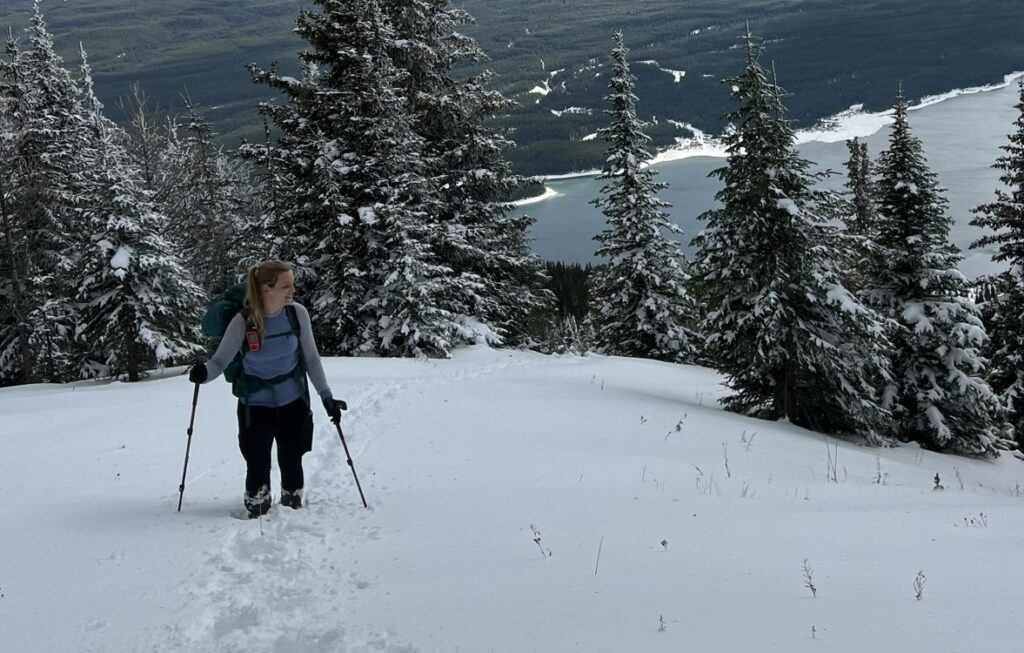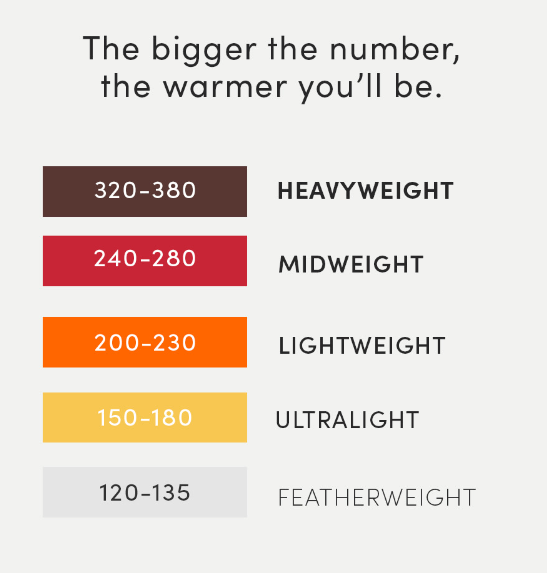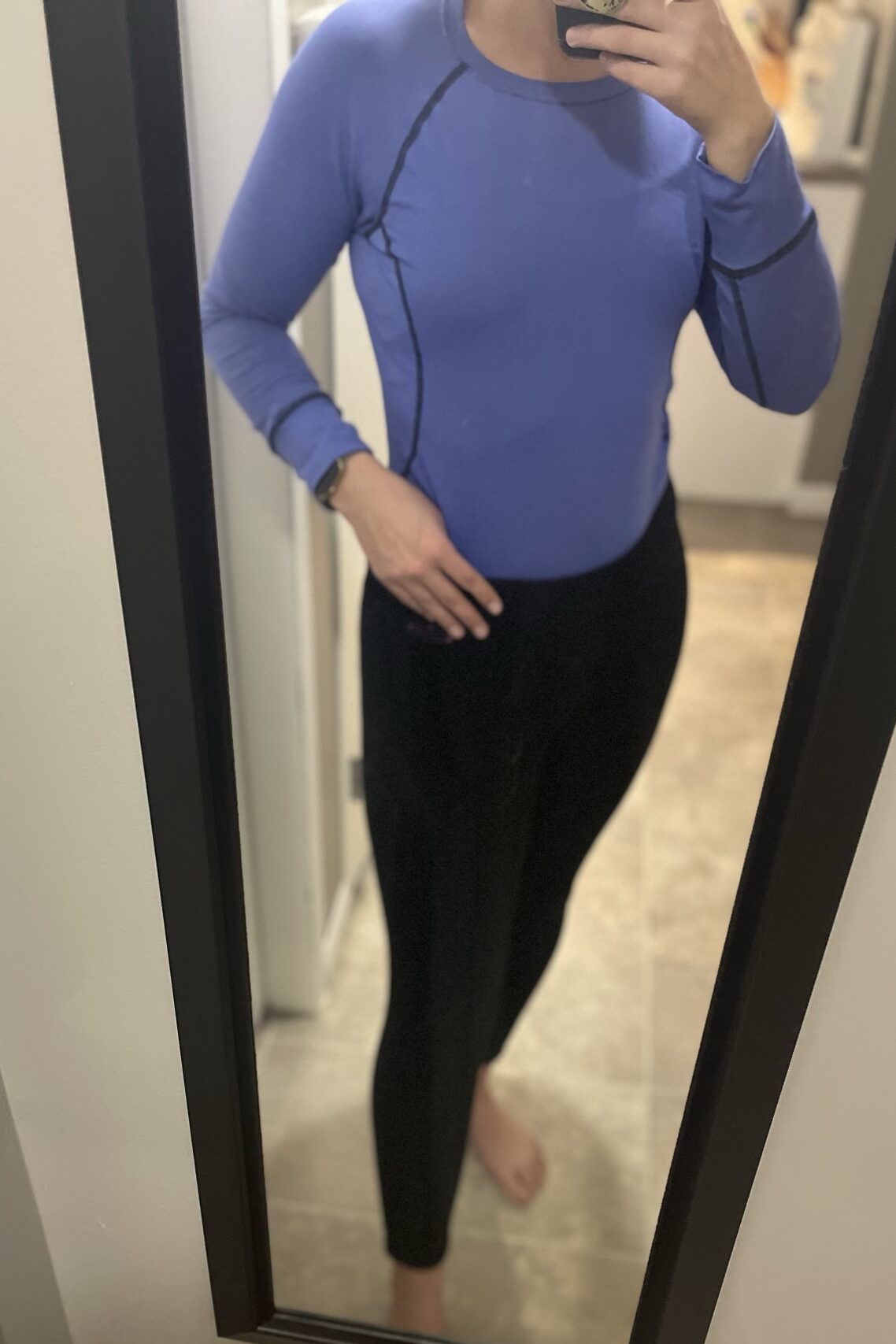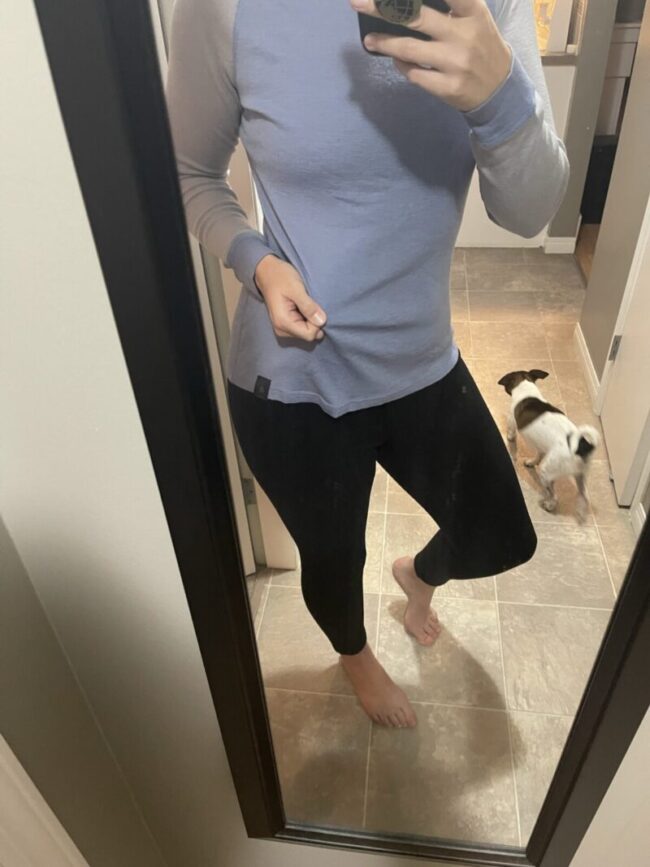A “thermal” is one kind of base layer. Thermals are the most dense base layer and are meant to be worn as the bottom layer in cold weather.
All thermals are base layers, but not all base layers are thermals.
Knowing the different kinds of base layers and when to choose thermals as your base layer is important to having a comfortable outdoor experience.

What is a Base Layer?
A base layer is the bottom-most layer of clothing you wear in a layering system, typically when adventuring outdoors. (Check out my article on what to wear under base layers here!)
Whatever clothing you choose to wear next to your skin becomes your “base layer”, even if it’s not marketed as such.
Usually made of synthetic fabric, wool fabric, or a combination of the two, clothing that is marketed as base layers are meant to wick sweat off your body and keep you at a comfortable temperature while you’re exercising or engaging in outdoor activities.
Base layers don’t warm you up, but rather keep you dry and allow your body to dissipate heat at varying rates depending on the kind of base layer you select.
Base layers come in a few different types, and understanding the difference is key to knowing which base layers you should choose.
Types of Base Layers
“Long underwear”, “second skins”, and “base layers” all refer to the same things. However, base layers are usually classified and separated by their “weight”. This is how you know what weather to wear each specific base layer in.
The three types of base layers are:

1. “Thermals” AKA Heavyweight Base Layers
Heavyweight base layers are usually what is referred to by the term “thermals”. They are meant to be worn in cold weather, such as when it’s below freezing, for example.
Thermals are the most dense type of base layer. They are represented by numbers above 300. (Look for the numbers directly in the name of the garment or listed in the specs for the item online or on the tag).
Heavyweight base layers, AKA “thermals”, are meant to maintain the maximum amount of body heat possible, which is why they’re ideal for very cold weather. They are proficient at wicking sweat away from the body and drying quickly to decrease the amount of heat you lose to the environment.
It is also important to note that some blogs incorrectly refer to all “base layers” as thermals”, even when they’re not a heavyweight construction or are actually made for warmer weather.
This can be very confusing, so make sure you know the limitations of your specific base layer before heading into vigorous activity in cold weather conditions.
Avoid wearing thermals in warm weather, as they will retain more heat than you need and can put you at risk of dehydration or heat stroke.
(See how tightly thermals should fit you here!)
2. Midweight Base Layers
Midweight base layers for cool weather, and are referred to by numbers between 200-280. These are great options when the weather starts to drop and you start needing long sleeves and jackets to stay warm.
3. Lightweight Base Layers
Lightweight base layers (also called “featherweight” or “ultralight”) are intended for warm weather. They often are referred to by numbers below 180. Check out my article on base layers in the summer here.

Should I Wear a Base Layer?
You should wear a base layer if you:
- Are participating in an outdoor activity that will cause you to sweat
- Are planning on being outdoors for extended periods with temperatures below 20C or 68F
- Are planning on spending time in the alpine (above the tree line).
If you are participating in outdoor activities in cool weather, you should be wearing a base layer.
During hot summer days when there is little-to-no risk of getting too cold, you can safely skip the base layers, though they do provide comfort through their sweat-wicking ability.
Base layers become more crucial in colder weather, particularly when your activity in the cold weather will cause you to sweat.
It doesn’t take much to work up a sweat when you’re wearing several layers. Wearing a base layer that removes the sweat from your skin and dries quickly is important to maintain body heat, especially if you’re not close to a source of external warmth like a car, building, or fire.
If you plan on doing any form of exercise in cool-to-cold temperatures (below room temperature, for instance), I would strongly recommend wearing a base layer.
It is important to remember that base layers are simply one part of a layering system. They are not meant to keep you warm without other clothing on top. Consider switching base layers when they are wet, adding middle layers for warmth, and adding outer layers (shells) for weather protection.
Should I Wear a Thermal?
You should wear a thermal when the weather is cold and you plan on spending time outside.
I would recommend wearing a midweight base layer below 20C or 68F, and a heavyweight (AKA thermal) base layer when the temperature is below 5C or 41F.
Wearing a thermal when you’re exercising in the cold will help to wick sweat off your skin and pull it into the fabric of the base layer, which is quick-drying and odor-resistant.
Sweat on your skin causes your body to lose heat to the environment during evaporation. Base layers prevent this from happening, as the evaporation happens from the fabric instead of your skin. This helps you stay warm in cold weather.
You should wear thermals in cold weather to stay comfortable, warm, and dry, during outdoor activity.

When Shouldn’t You Wear a Base Layer or Thermal?
Base layers are appropriate for most people in most situations. Consider wearing base layer underwear or trying different weights and fabrics to find the fit and style that is right for you in your preferred activity.
However, there are some circumstances in which people might choose to forgo a base layer or thermal. Some situations to avoid are:
- Don’t wear a thermal in hot weather.
- Don’t wear base layers that are too tight or restrictive for your activity.
- Don’t wear base layers in the summer if you need to cool off quickly.
- Don’t wear base layer fabrics if they irritate your skin.

5 Alternatives to Wearing Thermals or Base Layers
1. Fabric That Is Similar
Clothing that is advertised as “base layers” can be expensive. You can still exercise in clothing that is made of the same fabric without the “base layer” label.
Look for polyester fabrics, wool fabrics, or fabrics that have a synthetic blend. These clothing items will essentially do the same thing as marked base layers without the expensive price tag.
Consider wearing multiple layers of these clothing items or changing them out when necessary.
2. Alternative Fabrics
If you find base layer fabrics like polyester or wool irritating, consider trying other fabrics as your base layer, trying to avoid cotton as much as possible as it will actually make you lose body heat quickly.
Silk can be an adequate base layer for more mild activities, like easy hiking or walking in cool weather.
Whichever base layer fabric you choose, keep the principles of good layering and changing wet and soiled clothing whenever possible for the most comfortable experience.
3. Changing Out Your Clothing
If you choose to exercise in fabric that retains moisture, such as cotton, you can still safely exercise in cold weather, but the best way to prevent heat loss is by changing out the item of clothing when it becomes saturated.
Carry extra shirts, pants, and possibly underwear if you’re not wearing base layers. Change into a new dry clothes when the vigorous activity ceases, when they become completely wet, or when you plan on being stagnant for a period of time.
4. Excessive layering
IF you don’t want to wear base layers, or don’t have base layers to wear, know that the risk is that you will lose body heat more quickly.
You can combat this by wearing more layers than normal to preserve body heat. The more layers you wear, the more air gets trapped between layers of fabric and holds body heat.
Wear several layers in cold conditions, including mid-layers such as fleece fabrics and puffy jackets, and outer-layers or “shells” that protect you from wind and weather.
5. No base layer
There are times you might just choose to wear no base layer at all.
If the heat of summer, for instance, you might choose to go for a hike or a run without a shirt on. It is completely ok to skip base layers when you want to cool off quickly.
Base layer underwear can help pull sweat away from your genitals and keep you more comfortable, but they aren’t necessary.
Remember that any clothing worn next to your skin is your “base layer”, regardless if it is marketed as such. Follow the above advice or check out my other articles on base layers for more information!

Questions?
Is there something I didn’t answer? Do you have other thoughts or questions? Drop a comment below and I’ll get back to you!
Happy trails!

